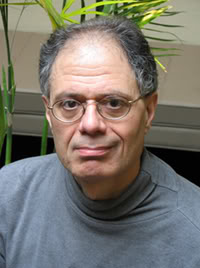In response to the State Department’s efforts to canvass European support for contemplated depredations in El Salvador, the prestigious “Economist” recently offered some helpful hints to official propagandists who may be required to fabricate moral justifications for forthcoming interventions. Among the platitudes suggested for deployment was: “to intervene against intervention is to uphold the principle of non intervention.” As Penny Lernoux’s book vividly demonstrates, this principle would legitimatize an international humanitarian “intervention” on a vast scale to remedy the malignant effects of decades of United States intervention in Latin America. Needless to say, this was not among the “Economists” recommendations.
Noam Chomsky, Alexander Cockburn and others have drawn attention to the selective use of the word “terror” by the partisans of order. A similar point might be made with respect to the word “intervention.” In El Salvador and elsewhere, giving or selling people arms with which to defend themselves against uniformed murderers is a dastardly and irresponsible intervention. Several decades of advising, equipping, and training the murderers, and of designing and profiting from the economy they are trained to protect from popular challenge, is not intervention at all, but, in the words of Arthur Schlesinger, Jr., part of the United States’ “general program of international good will.”
“Cry of the People” describes some of the fruits of our “international good will.” For example, “by the end of the ‘decade of development’ (the l960s), 99 percent of the loans made by the Agency for International Development to Latin American countries were being spent in the United States for products costing 30 to 40 percent more than the going world price.” This economic beneficence was supplemented by ideological tutelage: “More than 64,000 Latin American soldiers and officers, including 170 heads of state, ministers, commanding officers, and directors of intelligence, were exposed to (anticommunist) ideas and methods between 1950 and 1973 in the School of the Americas, better known as the ‘School of the Coups.’” The upshot of all this “security assistance” is nineteen military coups since 1960; and despite the Alliance for Progress, the only progress toward economic self-sufficiency made by most of Latin America in recent history was made during the Great Depression and the Second World War, when the region was left relatively alone. Living standards for the bottom three quarters of the population have declined throughout the continent over the century, “economic miracles” notwithstanding.
There is a great deal of persuasive analysis along these lines, but the book is also a story, the story of the radicalization and persecution of the Catholic Church in Latin America. For centuries the Church acquiesced in the brutal exploitation of the peasants, especially the native peoples, teaching them submission and sometimes organizing them into “missions” which imposed a not-very-benign form of slavery. Partly because of the reforming spirit engendered by the Second Vatican Council, but mostly because of the savage repression to which Central and South America have been subjected in the last two decades, many clergy and seminarians began to advocate moderate, and occasionally radical, social change. Catholic intellectuals developed “liberation theology,” a fusion of existentialism and Marxist humanism with traditional Christian ethics. Small groups of peasants, often led by the parish priest, formed grassroots communities, called comunidades de base, for mutual support, economic cooperation, and legal (sometimes physical) self- defense. Bishops issued impassioned and detailed indictments of the dictatorships for their violations of human rights and their political and economic “marginalization” of the vast majority of the population. The landmark Conference of Latin American Bishops at Medellin, Colombia, in 1968 ratified the beginnings of these developments and initiated many more.
As a result, the Church lost its traditional immunity. Large numbers of priests, nuns and seminarians, and even a few bishops, began to be — as their flock had been all along—exiled, imprisoned, tortured, and murdered. Most are listed in an appendix to “Cry of the People.”
What is one to make of this historic reversal: It will not do to explain simply, as Lernoux does, that “although frequently in the past Christianity has appeared in ideological guises, it is essentially a critical discipline, a call for justice.” Christianity has appeared in too many, and too odious, ideological guises to be thus confidently vindicated. But no doubt it behooves North Americans to keep our skepticism to ourselves. If genuinely heroic men and women claim to derive their inspiration from Catholicism, who will gainsay them? Sanguis martyrum, semen Ecclesiae.
It is instructive, finally, to compare “Cry of the People” with A.J. Langguth’s “Hidden Terrors”, one of the few other widely noticed books about state terror in Latin America. Lernoux, a correspondent for the more-or-less radical “Nation”, makes the functional role of official terror perfectly clear, and implicates U.S. business, military, and intelligence agencies beyond question. By contrast, longtime correspondent for the “New York Times,” offers a chilling but almost wholly anecdotal account. The central figure in “Hidden Terrors” is Dan Mitrione, a CIA agent who trained police interrogators in Brazil and Uruguay and was assassinated by Uruguayan guerillas. But there is barely a hint of explanation of why the CIA is massively present throughout Latin America, or of who profits from the peculiar form of stability it helps enforce. If Langguth, and the “Times”, would only connect.
